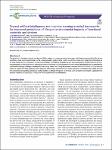Item Infomation
Full metadata record
| DC Field | Value | Language |
|---|---|---|
| dc.contributor.author | Ibn-Mohammed, T. | - |
| dc.contributor.author | Mustapha, K. B. | - |
| dc.contributor.author | Abdulkareem, M. | - |
| dc.date.accessioned | 2023-10-06T03:44:25Z | - |
| dc.date.available | 2023-10-06T03:44:25Z | - |
| dc.date.issued | 2023 | - |
| dc.identifier.uri | https://link.springer.com/article/10.1557/s43579-023-00480-w | - |
| dc.identifier.uri | https://dlib.phenikaa-uni.edu.vn/handle/PNK/9488 | - |
| dc.description | CC-BY | vi |
| dc.description.abstract | The application of functional materials and devices (FM&Ds) underpins numerous products and services, facilitating improved quality of life, but also constitutes a huge environmental burden on the natural ecosystem, prompting the need to quantify their value-chain impact using the bottom-up life cycle assessment (LCA) framework. As the volume of FM&Ds manufactured increases, the LCA calculation speed is constrained due to the time-consuming nature of data collection and processing. Moreover, the bottom-up LCA framework is limited in scope, being typically static or retrospective, and laced with data gap challenges, resulting in the use of proxy values, thus limiting the relevance, accuracy, and quality of results. | vi |
| dc.language.iso | en | vi |
| dc.publisher | Springer | vi |
| dc.subject | LCA | vi |
| dc.subject | FM&Ds | vi |
| dc.title | Toward artificial intelligence and machine learning-enabled frameworks for improved predictions of lifecycle environmental impacts of functional materials and devices | vi |
| dc.type | Book | vi |
| Appears in Collections | ||
| OER - Khoa học Vật liệu, Ứng dụng | ||
Files in This Item:

